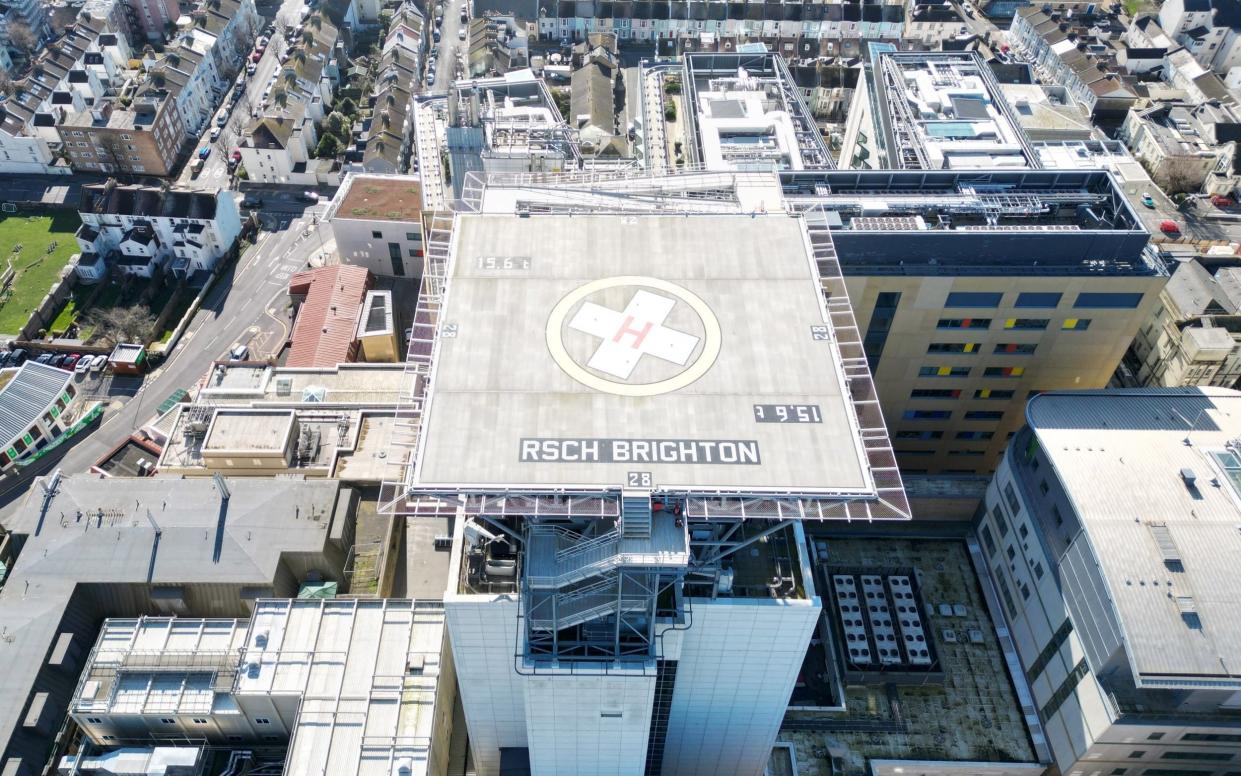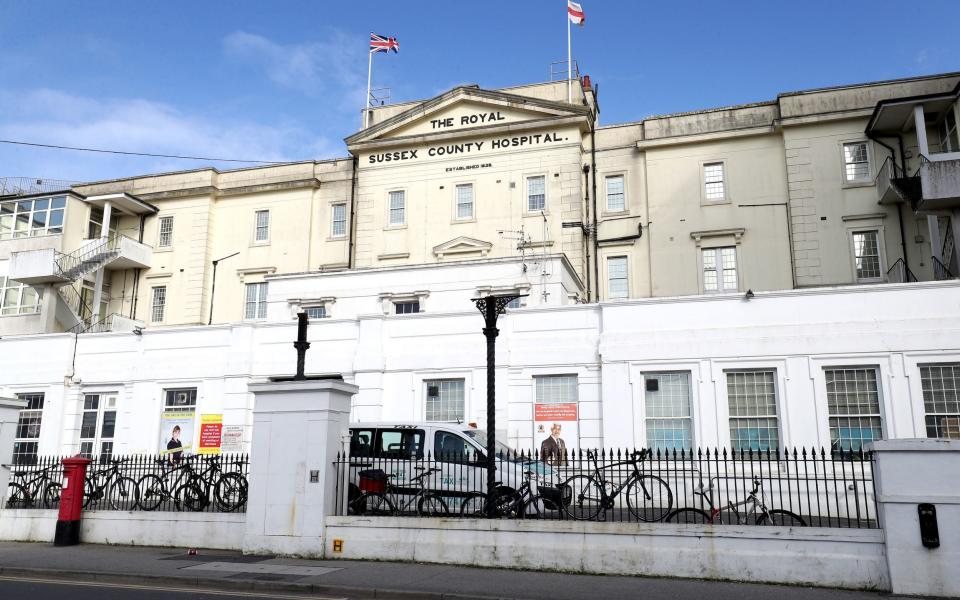Helicopters fail to land at £14m NHS helipad

Helicopters are unable to land at a £14-million NHS helipad – six years after it was supposed to open.
The landing platform for air ambulances and rescue helicopters on top of the Royal Sussex County Hospital in Brighton was supposed to open in 2018.
But the project has been repeatedly delayed, with fears that costs are spiralling due to unforeseen problems with the building the helipad sits on, amid concerns about how to ensure helicopters can land safely in the breezy coastal city.
The helipad sits on top of a 15-storey tower, built in the 1960s, directly above a neonatal intensive care unit for premature and seriously ill babies.
It was supposed to be a “massive boost” for the hospital’s role as the region’s major trauma centre and help patients get faster access to life-saving treatment, with plans for up to 100 flights a year.
Work began in January 2016. The following year, a progress update from the developers revealed that construction workers building the deck had lost most of their working time in the first two months of the year as a result of high winds.

After the project was delayed during the pandemic, last year the launch was delayed again by concerns that cladding on the tower block could be blown off by landing helicopters.
Panels covering the top 10 metres of the building had to be removed, checked and reattached with different brackets.
The work to replace cladding on the building took almost a year because it could only be carried out when windspeeds were below 25mph.
Even once the helipad finally becomes operational, it may be unusable in bad weather.
Helicopters will not be able to land there during strong winds, which are common in the hospital’s seaside location.
The project’s directors admitted in 2022 that “wind factors may restrict landings”, with winds having already delayed the building project.
Now the opening is delayed again over fears landing helicopters could damage windows in the hospital building below.
Late last year, surveyors raised concerns about the structural integrity of the large glass windows – a “glazed curtain wall” – in the tower block beneath the helipad late last year and warned they could be damaged by landing helicopters.
A review has been carried out and the Trust is considering what to do next.
Surveyors are also concerned about a “maintenance backlog” of issues within the building, which must be fixed before it can be deemed a safe landing site.
Plans to install appropriate lighting and test it at night were also put back from last year to this spring after work was delayed due to the need to fix the cladding on the building.
It is only once the problems with the windows and the “backlog of maintenance issues” in the tower block have been rectified that the hospital can put in place the systems it needs to meet regulations on running a helipad, including recruiting and training response and fire teams.
Speaking in Parliament in December, Lord Markham, a health minister, said: “There are several activities required to allow the helipad to become operational ... In addition, a review of outstanding backlog maintenance issues for the block on which the helipad is located [is required], to ensure any items that may prevent operation of the helipad are resolved, where possible.”
The Civil Aviation Authority will also have to carry out a final inspection and test flights before it can open.
The scale of the problems yet to be overcome suggests the helipad is unlikely to start receiving patients before 2025.
‘Unthoughtout vanity project’
John O’Connell, chief executive of the TaxPayers’ Alliance, said the situation was leaving taxpayers “hovering between frustration and disbelief”.
“While air ambulances have a vital role to play, this looks like a vanity project which hasn’t been thought through,” he added. “Health bosses must prioritise practical solutions, to ensure funding is spent where it’s truly needed: saving lives in emergencies.”
Health chiefs have said the helipad would make it quicker and easier for the most severely unwell or injured patients to access emergency care at the hospital, which is the major trauma centre for Sussex, Kent and Surrey.
The clinical director behind the redevelopment told councillors in 2022 that the helipad would deal with between 50 and 100 flights per year.
Currently emergency helicopters must land over a mile away in East Brighton Park and patients are transferred to the hospital’s emergency department via ambulance, wasting valuable minutes.
The hospital’s A&E department serves both Sussex residents and the 11 million tourists who visit Brighton annually. It is rated as “requires improvement” by hospital watchdog the Care Quality Commission.
The helipad project is part of a taxpayer-funded renovation of the Royal Sussex County Hospital, which includes the replacement of the NHS’s oldest operational hospital building, built in 1828.
Redevelopment of the site with new buildings to create 100 extra beds was originally budgeted at £485 million, but costs have since soared to around £750 million amid significant delays.
The helipad project initially received donations totalling £1.65million from the HELP (Hospital Emergency Landing Pads) Appeal charity, but the rest of the money has come from the Treasury.
Lord Markham said costs associated with the project were “currently” £14.2 million, but it is understood that the further works necessary to make the building safe will cause the bill to rise further.

